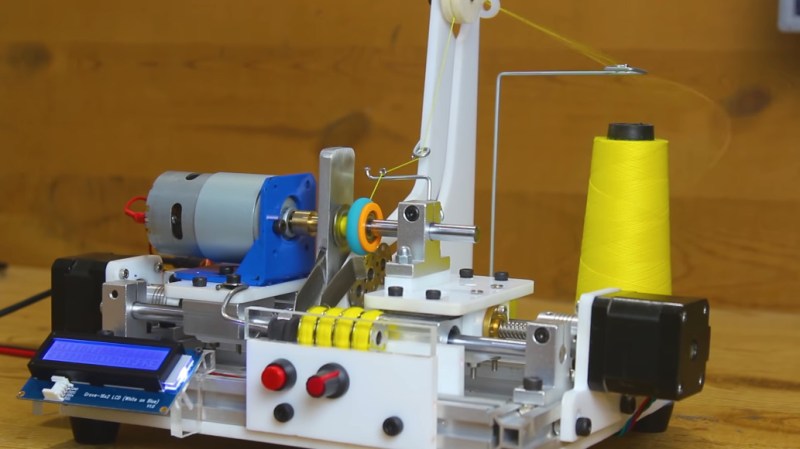Community, Leadership, Experimentation, Diversity, & Education
Pittsburgh Arts, Regional Theatre, New Work, Producing, Copyright, Labor Unions,
New Products, Coping Skills, J-O-Bs...
Theatre industry news, University & School of Drama Announcements, plus occasional course support for
Carnegie Mellon School of Drama Faculty, Staff, Students, and Alumni.
CMU School of Drama
Wednesday, October 21, 2020
Arduino Bobbin Winding Machine Is Freaky Fast
Hackaday: One of the worst things about sewing is finding out that your bobbin — that’s the smaller spool that works together with the needle and the larger spool to make a complete stitch — ran out of thread several stitches ago. If you’re lucky, the machine has a viewing window on the bobbin so you can easily tell when it’s getting dangerously close to running out, but many machines (ours included) must be taken halfway apart and the bobbin removed before it can be checked.
Subscribe to:
Post Comments (Atom)

2 comments:
As someone who does a lot of sewing and who has run out of bobbin thread without realizing it until I was nearing the end of a pant leg, I know the struggle of having to unthread and rethread a machine. Sometimes I contemplate just keeping the second sewing machine we have on hand just to wind bobbins. Despite that, I think that this is a little overboard for home sewing. If I was smart enough I would just make sure to have a few same colored bobbins on hand to work with. However, I think that for large shops reproducing many of the same costumes (thinking about holiday shows), this would definitely be a time saver. Having someone on the costume department team try to gauge how many bobbins would be needed of certain colors in advance would help speed things up during crunch time when stress is high and finding out your bobbin has run out just makes you want to rip your hair out. I also think that it would provide a cool insight into how many bobbins that a shop goes through per show; even if that information isn't super helpful, I think it would be a cool thing to track!
This video certainly begs the question: were you so curious about whether you could do something that you forgot to ask yourself whether you should? I agree here with Taylor, it might be a bit overkill for a hobbyist or home-sewing station, but maybe in a professional environment it could come in handy. I do, however, appreciate that this level of automation is now incredibly accessible in the home world. On the first day of Arduino class, I mentioned how I feel that using electronics is ushering in a new age of making. The electronics world always seemed out of reach for hobbyists unless you had a degree in computer engineering, but now you're a few short purchases and instructional videos away from making LEDs blink like a traffic light or automating simple tasks around your house. I really think that Arduino is going to be one of those devices that will be integrated into secondary education, since an understanding of coding and electronics is going to be necessary in the upcoming decades. Until then, it can still be fun to make stuff like this!
Post a Comment